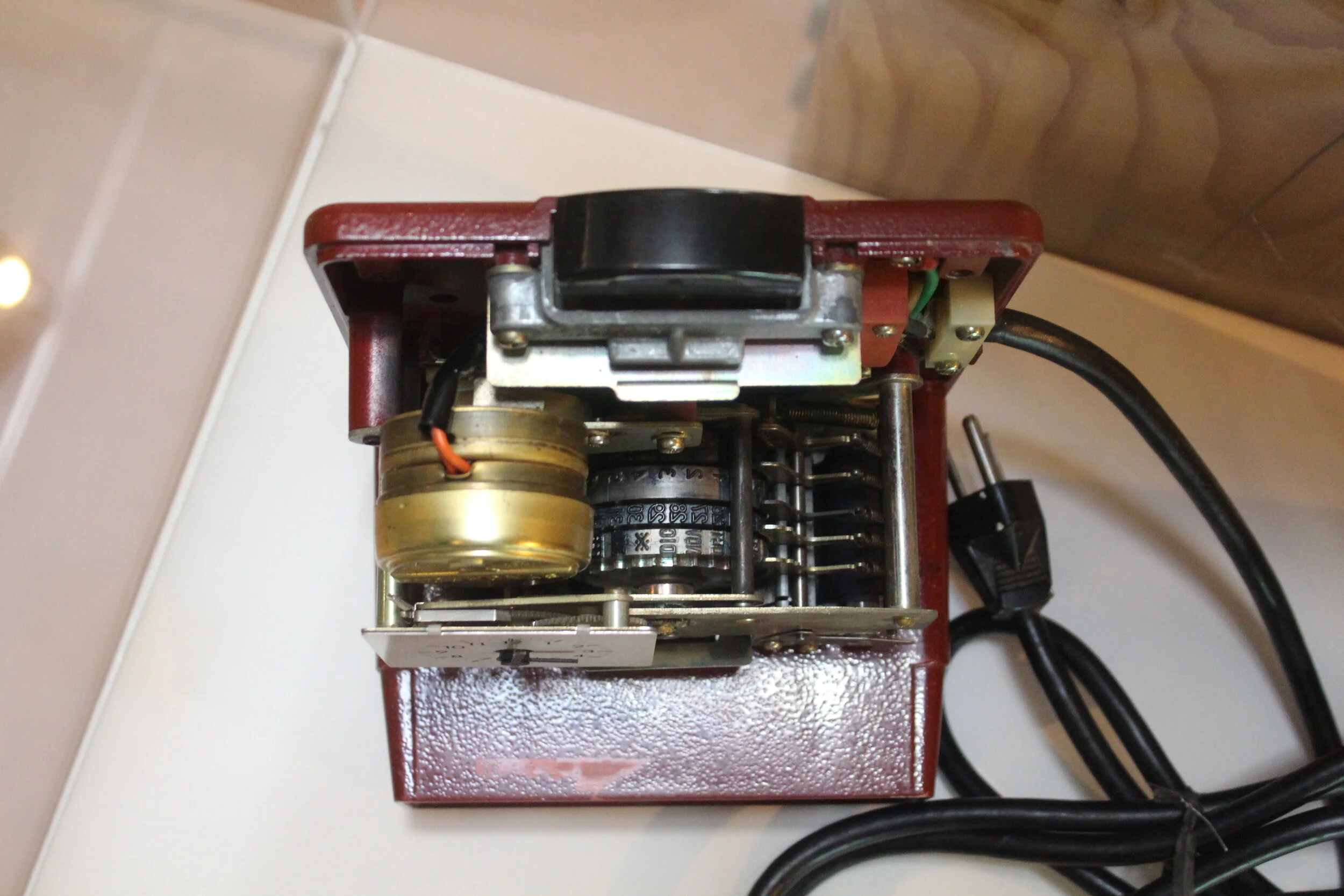September’s Artifact of the Month is an Amano Time Clock, which is not only a beautiful piece of machinery, but also a part of Redding’s history. Built by Amano Time Systems, a Japanese manufacturer in the 1970s, it was used in Redding’s premier upscale department store at the time, Dicker’s.
Artifact of the Month: Haida Argillite Sculpture
Artifact of the Month: Ice Chipper
Artifact of the Month: Historic Remedies
Artifact of the Month: Victorian Pickle Castor
How providential that we are able to present this perfectly pleasing yet peculiar pickle paraphernalia! This is not your ordinary pickle jar! In fact, it probably didn’t hold the type of pickles we are most familiar with today – those delicious, tangy, former cucumbers. Before the ubiquity of refrigeration, jams, jellies, pickles, and chutneys preserved produce for future consumption. Victorian pickle recipes included sweet pickled cantaloupe, pickled onions, cauliflower, cabbage, radish pods, nasturtium seeds, walnuts, as well as the more familiar gherkins and cucumbers. Spiced or pickled fruits such as sour plums, blackberries, cherries, and pears were also popular. Yum!
Artifact of the Month: Powder Horn
You may think this is a horn to blow – a type of trumpet to gather the troops and charge into battle! Though these objects were sometimes used in battle, by local militiamen during the Revolutionary War for example, powder horns served a different purpose. In addition to bullets and the firearms themselves, powder horns carried another important part of the kit – gunpowder!
Artifact of the Month: Bentwood Box
Artifact of the Month: Opera Glasses
Long before we cozied up for a movie with a bowl of popcorn and a loved one, shuffled through our iPod playlist, cheered to a baseball game on the radio, or sheltered-in-place, folks sought live entertainment in the company of friends and strangers. It was both intimate and communal. Performances such as plays, operas, ballets – even music, magic, and comedy – took place on a big, well-lit stage. Patrons sat in a darkened auditorium. Some were close enough to see the sweat of an actor’s brow, yet some sat too far to make out important details that helped tell the story. Sporting events like horse racing also presented a need to see the action from a distance. Luckily, a series of technological advances led to an elegant solution – opera glasses.
Artifact of the Month: 50 Sen Banknote
Sometimes, the internet is a curator’s friend. For 42 years, this Artifact of the Month has been misidentified in our records. The donor thought that her late husband had passed on to her a 50-yen banknote that he’d acquired when he was stationed in Japan during World War II. She noted in her correspondence, that it had been worth “about 20 American dollars when he got it.” When the Redding Museum of Art and History received the donation in 1978, they did not have immediate access to the resources required to verify or refute this identification, so it went into the records as “yen.”
Dam to Bridge Exhibition
Hopefully, you have had a chance to see one of our permanent exhibitions focused on two of our local icons: Shasta Dam and Sundial Bridge. These two structures offer an architectural snapshot of our rich history and our relationship with water.
Presented by Dignity Health















